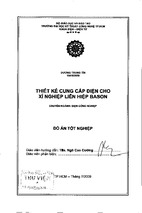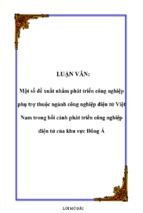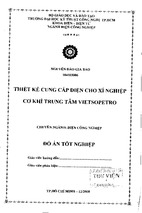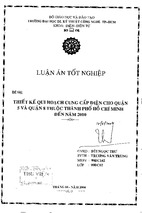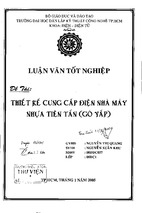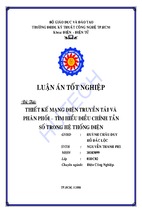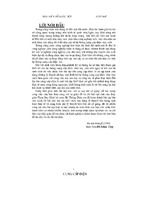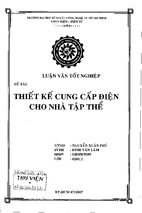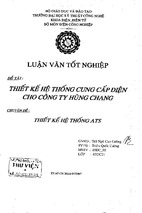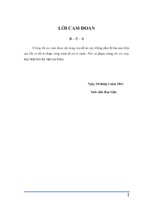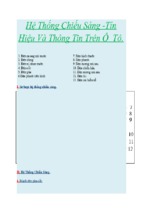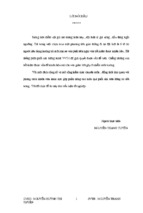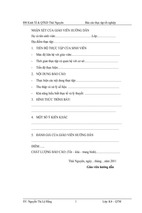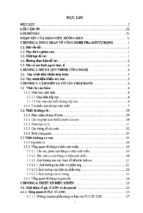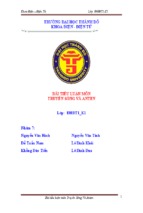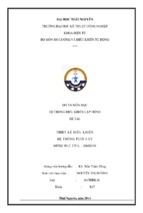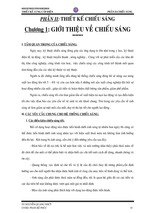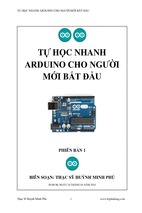NO.1
STEP BY STEP
GUIDE BOOK ON
BLACK WIRE ATTACHED
TO BRASS TERMINAL SCREW
GROUND
WIRES
LOADED WITH
SIMPLE, EASY TO
FOLLOW WIRING
DIAGRAMS
ALL ABOUT OUTLETS
HOW TO WIRE THREE-WAY
SWITCHES
PAGE 30
FROM/
POWER
SOURCE
COMMON
TERMINAL
SCREW
(Black or Copper
Colored)
12-2 WIRE
(WITH GROUND)
PAGE 25
TABLE OF CONTENTS
PAGE
HOW THE HOME ELECTRICAL SYSTEM WORKS .................................2, 3, 28
HOW TO TURN OFF MAIN POWER SUPPLY ....................................................4
THE THREE WAYS TO GET POWER TO YOUR NEW WIRING JOB ................5
HOW THE GROUND WIRE WORKS IN PLASTIC BOXES.............................6, 7
ALL ABOUT ELECTRIC WIRE ........................................................................8, 9
HOW TO USE WIRENUTS AND SCREW TERMINALS ....................................10
HOW TO INSTALL WIRING IN NEW WALLS AND PETITIONS.......................11
THE MOST COMMON MEASUREMENTS FOR OUTLETS AND SWITCHES .12
ALL ABOUT THE GROUND WIRE ....................................................................13
HOW TO WIRE ELECTRIC DRYERS AND RANGES .................................14,15
WATTS USED BY VARIOUS ELECTRICAL ITEMS..........................................16
HOW TO FMD THE CAUSE OF A SHORT CIRCUIT........................................ 17
HOW TO FIX FLOURESCENT LIGHTS.............................................................18
HOW TO WIRE BOXES, FIXTURES AND SWITCHES .....................................19
COLOR CODING OF WIRES, AND SCREW TERMINALS ...............................20
ELECTRICAL SYMBOLS ALSO ALL ABOUT SWITCHES ..............................21
HOW TO ADD NEW OUTLETS TO EXISTING ONES.................................22, 23
ALL ABOUT OUTLETS ............................................................................24 to 29
ALL ABOUT 3 WAY SWITCHES..............................................................30 to 37
ALL ABOUT SINGLE POLE SWITCHES .................................................38 to 43
ALL ABOUT 4 WAY SWITCHES .......................................................................44
HOW TO WIRE OUTLET AND LIGHT WITH PULL CHAIN ..............................45
HOW TO WIRE OUTLET - SWITCH AND LIGHT........................................46, 47
ELECTRICAL
TERMS........................................................................................48
IMPORTANT
ALL OF THE ILLUSTRATIONS IN THIS BOOK SHOW TYPICAL WIRING METHODS, ACTUAL INSTALLATIONS MUST BE ADAPTED TO INDIVIDUAL REQUIREMENTS, SO FOLLOW NATIONAL, STATE, AND
LOCAL ELECTRICAL CODES.
STEP BY STEP GUIDE BOOK CO. HAS MADE EVERY EFFORT TO ENSURE ACCURACY AND RELIABILITY OF THE INFORMATION INSTRUCTIONS, AND DIRECTIONS IN THIS BOOK; HOWEVER, IT IS IN NO
WAY TO BE CONSTRUED AS A GUARANTEE.
STEP BY STEP GUIDE BOOK CO. IS NOT LIABLE IN CASE OF MISINTERPRETATIONS OF THE DIRECTIONS, HUMAN ERROR OR TYPOGRAPHICAL MISTAKES.
Author: Ray McReynolds
IF YOU CANT FIND OUR BOOKS IN YOUR AREA,
CALL US ON OUR TOLL FREE PHONE NUMBER
FOR INFOMATION ON THEM. 1-800-678-1500 OR
WRITE TO:
Step-By-Step Guide Book Co.
P.O. Box 70865
Salt Lake City, Utah 84170
Copyright © 1982
Revised 1989
Revised 1990
Revised 1994
Step By Step Guide
Book Co.
WIRING COLOR GUIDE
WHITE WIRE
nfutral
c
• 1 1 1 1 1 im n
BLACK WIRE
RED WIRE
tor
hot
BARE WIRE ground wire
How the Home Electrical System Works
a
mat
NUT
WIRE NUT GUIDE
USE
RED
WIRE NUTS
WHERE WIRE NUTS ARE
USED
ON
THIS
PAGE
INCLUDING GROUND WIRES
Color coding of wire
• The black wire is HOT
• The white wire is NEUTRAL
Etch this wiring rule in your memory and keep it there.
NEVER CONNECT THE BLACK (HOT) WIRE TO THE
WHITE (NEUTRAL) WIRE. (Exception: see page 20)
Connect the black wire to the brass-colored terminal on
switches, receptacles, sockets, fuse boxes, and to the black
wires on pull chain fixtures. The white (neutral or ground
wire—also called the "continuous wire") is grounded at the
electric service switch. Connect it to the silver or light-colored
terminal of all receptacles, etc., and to the white wire on all
lighting fixtures. Again—never hook to the hot wire!
FROM
POWER
SOURCE
WHITE WIRE ATTACHED
TO WHITE OR SILVER
TERMINAL SCREW (
CIRCUIT
BREAKER BOX
12-2
BLACK WIRE ATTACHED
TO BRASS TERMINAL SCREW
WIRE '
(WITH GROUND)
CEILING BOX
GROUND WIRE ATTACHED
TO GREEN HEX GROUNDING
TERMINAL SCREW
• ON THIS PAGE WE SHOW USING METAL WALL AND METAL CEILING
BOXES. THE WIRING IN PLASTIC AND METAL BOXES IS THE SAME,
EXCEPT FOR THE GROUND WIRE. THE GROUND WIRE ATTACHES TO
THE METAL BOXES, IN PLASTIC IT DOES NOT, SEE PAGE 6 AND 7 FOR
MORE ON HOW THE GROUND WIRE WORKS IN PLASTIC BOXES.
GROUND
WIRES
/fr
•=="^
WIRE NUT GUIDE
A
MM
NUT
USE RED WIRE NUTS
WHERE WIRE NUTS ARE
USED
ON
THIS
PAGE
INCLUDING GROUND WIRES
CIRCUIT
BREAKER BOX
How the Home Electrical System Works
THE PICTURE BELOW SHOWS HOW THE POWER SUPPLY COMES OUT OF THE
BREAKER BOX SUPPLYING POWER TO THE OUTLETS AND HOW TO CHANGE
DIRECTION OF THE WIRE WITH THE USE OF A JUNCTION BOX.
CEILING BOX
FROM
POWER
SOURCE
12-2 WIRE
(WITH GROUND)
/'WHITE WIRE ATTACHED
TO WHITE OR SILVER
TERMINAL SCREW
BLACK WIRE ATTACHED
TO BRASS TERMINAL SCREW
GROUND WIRE ATTACHED
TO GREEN HEX GROUNDING
TERMINAL SCREW
JUNCTION
BOX
PUT COVERS ON JUNCTION BOXES.
ON THIS PAGE WE SHOW USING METAL WALL AND METAL CEILING
BOXES. THE WIRING IN PLASTIC AND METAL BOXES IS THE SAME,
EXCEPT FOR THE GROUND WIRE. THE GROUND WIRE ATTACHES TO
THE METAL BOXES, IN PLASTIC IT DOES NOT, SEE PAGE 6 AND 7 FOR
MORE ON HOW THE GROUND WIRE WORKS IN PLASTIC BOXES.
How to Turn off Main Power Supply
Before starting any work, you must disconnect
(or "kill") the circuit you'll be working on at its
source in the service panel. If your circuits are
protected by fuses, removing the appropriate fuse
disconnects the circuit from incoming service. In a
service panel equipped with circuit breakers, you
can disconnect a circuit by switching its breaker
to the OFF position.
To make sure you disconnect the correct circuit,
turn on a light that's connected to the circuit before
you remove the fuse or turn off the circuit breaker.
The light will go out when you've removed the
correct fuse or turned off the correct breaker.
If you have any doubt about which fuse or
breaker protects which circuit, shut off all current
coming into your home at the main disconnect
While you're at your service panel, spend another
moment to prevent a possible disaster. Tape a note
on the panel explaining what you're doing so no one
will come along and replace the fuse or reset the
circuit breaker while you're working on the wiring.
Then either carry the fuse with you in your pocket
or tape the circuit breaker in its OFF position.
Chart Shows Color Coding of Wires and Terminal Screws
Color of Wire
Color of Terminal
Screw
Hot — Neutral
or Grounding Wire
White
Silver or White
Neutral Wire
Black
Brass
Hot Wire
Red
Brass
Hot Wire
Green
Green
Grounding Wire
Bare Wire
Green
Grounding Wire
e
a
on
MAIN CIRCUIT BREAKER
0
e
1
SWITCHING THE MAIN BREAKER TO THE
OFF POSITION SHUTS OFF ALL POWER.
a
With the electricity turned off, you can work in
complete safety. Still, it's a good idea to keep a few
additional safety precautions in mind.
Remember that water and electricity don't mix.
Never work on wiring, fixtures, switches, or
appliances when you're wet or standing on a damp
spot. Lay down dry boards to stand on if the floor
or ground is wet.
— fH
n
9
3 .
-8 —
0
V. ground
three-wire cable X
with ground
In Example "A" above, the numbers and letters stamped
on the electric wire has the following meaning.
The "12" means it is No. 12 wire in size.
The "2" means it has two wires.
The "G" means with ground wire.
The "N-M" means non-metalic
wire
white - neutral wire
In Example "B" above, it
is exactly like Example A
except it has three wires
instead of the two.
All About Electric Wire
When doing any electrical wiring, you have to use the
right size fuses or multi-breakers to protect the electric
wire against any overloads or short circuits. Also, wire can
handle only so many watts before it becomes overloaded
and blows fuses or kicks breakers off. Check below.
#14-2 WIRE WITH GROUND
#12-2 WIRE WITH GROUND
When working with No. 14 wire,
use a 15 amp fuse or a
15 amp breaker to protect it
against overloads or short circuits.
15-amp
When working with No. 12 wire,
use a 20 amp fuse or a 20 amp
breaker to protect it against
overloads or short circuits.
20-amp fuse
Color coding of wire
• The black wire is HOT
• The white wire is NEUTRAL
Etch this wiring rule in your memory and keep it there.
NEVER CONNECT THE BLACK (HOT) WIRE TO THE
WHITE (NEUTRAL) WIRE. (Exception: see page20)
Connect the black wire to the brass-colored terminal on
switches, receptacles, sockets, fuse boxes, and to the black
wires on pull chain fixtures. The white (neutral or ground
wire—also called the "continuous wire") is grounded at the
electric service switch. Connect it to the silver or light-colored
terminal of all receptacles, etc., and to the white wire on all
lighting fixtures. Again—never hook to the hot wire!
Important
ALWAYS SHUT OFF POWER TO THE CIRCUIT YOU WILL BE WORKING ON, OR THE ENTIRE
HOUSE IF YOU ARE NOT SURE WHICH FUSE OR BREAKER CONTROLS THE CIRCUIT.
DOUBLE CHECK WITH A TESTING DEVICE TO BE ABSOLUTELY SURE THE CIRCUIT IS DEAD.
How To Use Wirenuts and Screw Terminals
HOW TO PUT ON WIRENUT
WIRE NUTS JOIN WIRE ENDS
Step 1. Strip off about 1
inch of insulation from
ends of wires you're
going to join. Twist the
stripped ends clockwise
at least one and one-half
turns.
Step 2. Snip % to J/2 inch
off the twisted wires so
the ends are even.
Step 3. Screw the wirenut
on clockwise.
HOW TO JOIN WIRE TO SCREW TERMINALS
terminal aperture
Step 1. Strip % inch of insulation off the wire end.
Then use a pair of needle nose plyers to form a
half loop in the bare wire.
release
aperture
BACKWIRED OUTLETS AND SWITCHES
can be loosened from the wires by
pressing a screwdriver point into
the release aperture.
screw
terminal
Step 2. Hook the wire clockwise
around the screw terminal. As you
tighten the screw the loop will close.
Always strip wires so no more
than 1/16 inch of bare wire extends out
beyond the screw head.
strip gauge
Wrong way
BACKWIRED OUTLETS AND SWITCHES
HOW TO JOIN SEVERAL WIRES TO SCREW TERMINALS
Pigtail splice
The electrical code requires that only one wire may be attached
to a screw terminal — the above picture shows the only approved
way to do this — it is called a pigtail splice.
Right way
How to Install Wiring in New Walls and Partitions
support
cable
every
5 feet
(1.5m)
with
strap
or
staple
cable
extends
6 inches
(150mm)
from box.
staple for NM cable
don't staple through
or smash cable
staple cable 8 inches
from box-
drill
%-inch.
metal plate protects
cable
holes for
cable
1'/2 inches
from edge
Strip outer sheath of insulation before inserting
wires into box.
Step 1. Install box. Secure cables to box so that 6
inches of each cable extends from box. (150 mm)
Step 2. Strip outer sheath of insulation to back of box;
remove
sheath and all separation materials. Strip off
Vz to 3/4 inch insulation from wire ends.
OUTLETS AND SWITCHES
ALL OUTLETS MUST BE OF THE GROUNDED TYPE.
Outlets Should Be No More than 12 Ft. Apart.
Outlets Should Be 12 " High from Floor.
Switches Should Be 48" High from Floor
Switches Should Always Be Put on Same Side of Door that the Door Knob Is on.
CHECK ON LOCAL CODES FOR MORE INFORMATION NEEDED
ON OUTLETS AND SWITCHES FOR YOUR WIRING PROJECT
11
The Most Common Measurements for Outlets and Switches
OUTLETS AND SWITCHES
ALL OUTLETS MUST BE OF THE GROUNDED TYPE.
Outlets Should Be No More than 12 Ft. Apart.
Outlets Should Be 12 " High from Floor.
Switches Should Be 48" High from Floor.
Switches Should Always Be Put on Same Side of Door that the Door Knob Is on.
All About The Ground Wire
USE THE GREEN OR BARE WIRE AS THE GROUND WIRE IN ELECTRICAL WIRING. USE THE GREEN-COLORED
TERMINAL SCREW AS THE GROUNDING SCREW IN ANY ELECTRICAL WORK.
IF YOU ARE USING ELECTRICAL WIRETHATHASNOGROUND WIRE IN IT, USE AGROUND WIRETHESAMESIZE.
FOR EXAMPLE, IF YOU ARE USING NUMBER 12 WIRE USE A NUMBER 12 GROUND WIRE.
USE 10/32" STOVE BOLTS OR MACHINE SCREWS TO ATTACH THE GROUND WIRE TO THE BACK OF WALL
BOXES, SWITCH BOXES, CEILING BOXES, AND JUNCTION BOXES.
THE GROUND WIRE NOT ONLY PROTECTS YOU FROM GETTING SHOCKED, BUT PROTECTS THE ELECTRICAL
ITEMS IN YOUR HOUSE FROM GETTING DAMAGED FROM LIGHTNING.
Checking an Outlets Ground
TEST THE GROUNDING OF A NEWLY
INSTALLED OUTLET BY INSERTING
ONE PROBE OF THE VOLTAGE TESTER
INTO TH€ SEMICIRCULAR GROUND
SLOT AND THE OTHER INTO EACH OF
THE ELONGATED SLOTS SUCCESSIVELY. THE TESTER SHOULD LIGHT
WHEN THE PROBE IS PLUGGED INTO
THE HOT SLOT. (IN A MODERN OUTLET
THIS SLOT IS SLIGHTLY SHORTER
THAN THE OTHER SLOT.) IF NEITHER
SLOT LIGHTS THE TESTER, THE
OUTLET IS NOT GROUNDED AND THE
WIRING MUST BE CORRECTED.
Underwriter's k n o t . .
To (.rolect cord f r o m stroin,
lu^l loo() c o r r f s us shown .
. then pull down lightly
nto r e c e s s between prongs
How to Wire Electric Dryers
whiteneutral
wire
Recessed Dryer Recepticle
120/240-volt, 30-ampere, grounded. Designed
especially for clothes driers, this large receptacle supplies 240 volts for the heating coils of
the drier and 120 volts for such standard accessories as the timer and the pilot light.
ground wire '
white
neutral
Surface Dryer Recepticle
USE WIRE SIZE 10-3 WITH GROUND FOR ELECTRIC DRYERS.
Dryer Cord
14
How to Wire Electric Range
Recessed Range Recepticle
120/240-volt, 50-ampere, grounded. An electric
range requires the high amperage and the combination of voltages provided by this receptacle.
High-temperature settings of the oven and burners are connected to the 240-volt circuit.
The low temperature settings, timer, pilot lights
and built-in receptacles operate on 120 volts.
Surface Range Recepticle
USE WIRE SIZE 6-3 WITH GROUND FOR ELECTRIC RANGES.
Range Cord
r
Watts Used by Different Electrical Items
Approximate Ratings
Approximate Ratings
Air conditioner (central) . . . . . . . . . . . . 5000
(room, 1/3 ton) . . . . . . . . . . . 800
(room, 3/4 ton) . . . . . . . . . . 1300
(room, 1 ton) . . . . . . . . . . . . 1600
Blender . . . . . . . . . . . . . . . . . . . . . . . 250-1000
Bottle warmer . . . . . . . . . . . . . . . . . . . . . . 400
Broiler . . . . . . . . . . . . . . . . . . . . . . . . . . . . 1500
Can opener . . . . . . . . . . . . . . . . . . . . . . . . 150
Clock . . . . . . . . . . . . . . . . . . . . . . . . . . . . . . . . 2
Coffee m a k e r . . . . . . . . . . . . . . . . . . 500-1000
Corn popper . . . . . . . . . . . . . . . . . . . . . . . 500
Dishwasher . . . . . . . . . . . . . . . . . . . 1000-1500
Dryer . . . . . . . . . . . . . . . . . . . . . . . . 4000-8000
Electric blanket . . . . . . . . . . . . . . . . . . . . . 200
Fan (attic) . . . . . . . . . . . . . . . . . . . . . . . . . . 400
(exhaust for range) . . . . . . . . . . 250
(portable) . . . . . . . . . . . . . . . . . . 100
Floor p o l i s h e r . . . . . . . . . . . . . . . . . . . . . . . 350
Food warmer . . . . . . . . . . . . . . . . . . . . . . . 500
Freezer, frostless . . . . . . . . . . . . . . . . 350-500
s t a n d a r d . . . . . . . . . . . . . . . . 250-400
Fryer, deep fat . . . . . . . . . . . . . . . . . . . . . 1400
Frying pan, automatic . . . . . . . . . . . . . . 1100
Furnace, coal . . . . . . . . . . . . . . . . . . . . . . . . 400
g a s . . . . . . . . . . . . . . . . . . . . . . . 150
oil . . . . . . . . . . . . . . . . . . . . . . . 750
Garbage disposer . . . . . . . . . . . . . . . 400-900
Grill . . . . . . . . . . . . . . . . . . . . . . . . . . . . . . 1000
Hair D r y e r . . . . . . . . . . . . . . . . . . . . . . . . . . 260
Heater (hot water) . . . . . . . . . . . . 2000-5000
(room) . . . . . . . . . . . . . . . . . . 1250
Hot plate (per b u r n e r ) . . . . . . . . . . . . . . . 750
Iron (hand) . . . . . . . . . . . . . . . . . . . . . . . . 1050
(mangle) . . . . . . . . . . . . . . . . 1600
Knife sharpner
Knife s h a r p n e r . . . . . . . . . . . . . . . . . . . . . . 100
Lamp (heat) . . . . . . . . . . . . . . . . . . . . . . . . 250
(sun) . . . . . . . . . . . . . . . . . . . . . 400
Lights (flourescent circlines)........ 22-32
(flourescent tubes) . . . . . . 15-60
(incandescent, per bulb)10 & up
(night l i g h t ) . . . . . . . . . . . . . . . . . 7
Microwave oven . . . . . . . . . . . . . . . . . . . . 600
Mixer . . . . . . . . . . . . . . . . . . . . . . . . . . . . . . 150
Power tools
Drill, 1/4 i n c h . . . . . . . . . . . . . 150
3/8 inch . . . . . . . . . . . . . . . . . . 250
1/2 inch . . . . . . . . . . . . . . . . . . 350
Grinder . . . . . . . . . . . . . . . . . . 200
L a t h e r . . . . . . . . . . . . . . . . . . . . 300
Lawn Mower . . . . . . . . . . . . . 300
Sander, portable .......... 750
Saw, bander . . . . . . . . . . . . . . 250
bench . . . . . . . . . . . . . . . . 300-600
jig . . . . . . . . . . . . . . . . . . . . . . . 250
radial arm . . . . . . . . . . . . . . . 1500
s a b r e . . . . . . . . . . . . . . . . . . . . . 200
Soldering iron . . . . . . . . . . . . 150
Projector (slide or movie) . . . . . . . . . . . . 350
Radio, console . . . . . . . . . . . . . . . . . . . . . . 150
p o r t a b l e . . . . . . . . . . . . . . . . . . . 50
Range, oven . . . . . . . . . . . . . . . . . . 4000-8000
top . . . . . . . . . . . . . . . . 4000-8000
Refrigerator, frostless . . . . . . . . . . . . 300-450
s t a n d a r d . . . . . . . . . . . . . . 250-350
R o a s t e r . . . . . . . . . . . . . . . . . . . . . . . . . . . . 1350
R o t i s s e r i e . . . . . . . . . . . . . . . . . . . . . . . . . . 1400
Sewing machine . . . . . . . . . . . . . . . . . . . . . 75
Shaver . . . . . . . . . . . . . . . . . . . . . . . . . . . . . . . 10
Stereo, h i - f i . . . . . . . . . . . . . . . . . . . . . . . . . 300
Sump pump . . . . . . . . . . . . . . . . . . . . . . . . 300
Television, black and white . . . . . . . . . . 250
c o l o r . . . . . . . . . . . . . . . . . . . . . 300
T o a s t e r . . . . . . . . . . . . . . . . . . . . . . . . . . . . 1000
Vacuum cleaner . . . . . . . . . . . . . . . . 300-800
Waffle iron . . . . . . . . . . . . . . . . . . . . . . . . . 900
Washing machine . . . . . . . . . . . . . . . . . . . 600
Automatic Toaster
1100 watts
Table Lamp
100 watts
How to Find the Cause of a Short Circuit
Most short circuits occur in flexible
cords, plugs, or appliances. Look for
black smudge marks on faceplates or
frayed or charred cords connected to
dead circuit. Simply replace damaged
cord or plug before installing new
fuse or resetting breaker.
If you find no visible signs of trouble, though, you'll
have to trace your way through circuit. To do this,
turn off all wall switches and unplug every
appliance on dead circuit. Then install new fuse or
reset tripped breaker.
\
I
If fuse blows right away, pull out fuse or make sure
circuit breaker is OFF. Remove each faceplate and
inspect device and wiring. Look for charred wire
insulation, wire shorted against back of metal box,
or device literally falling apart. Replace defective
switch or receptacle or faulty wiring. Then
install new fuse or reset breaker.
If new fuse doesn't blow or breaker
doesn't trip right away, turn on each wall
switch, one by one, until fuse blows or
circuit breaker trips.
When turning on wall switch causes fuse to blow
or breaker to trip, short is in fixture outlet
controlled by switch or in ON position of switch.
With circuit dead, inspect outlet and switch for
charred wire insulation and faulty connections.
Replace faulty fixture or switch. Then install
new fuse or reset breaker.
If turning on wall switches doesn't blow
fuse or trip breaker, trouble is in
If circuit went dead as soon as you turned
appliance on, appliance or its switch is
probably defective and should be replaced
or repaired.
If circuit went dead as soon as you
plugged appliance in, plug or cord is
probably at fault and should be replaced.
appliance. Plug in and turn on appliances
one by one. When fuse blows or breaker
trips again, you'll know you've found
offending appliance. Then install new fuse
or reset breaker.
Note: If none of the above solves the problem and your fuse or breaker
still blows or trips, your wiring is at fault. Call an electrician.
Important
ALWAYS SHUT OFF POWER TO THE CIRCUIT YOU WILL BE WORKING ON, OR THE ENTIRE
HOUSE IF YOU ARE NOT SURE WHICH FUSE OR BREAKER CONTROLS THE CIRCUIT.
DOUBLE CHECK WITH A TESTING DEVICE TO BE ABSOLUTELY SURE THE CIRCUIT IS DEAD.
Color of Wire
Color of Screw
Hot - Neutral
or Grounding Wire
White
Black
Red
Green
Silver or White
Brass
Brass
Neutral Wire
Hot Wire
Green
Electrical
Box Ground
Grounding Wire
Bare Wire
Hot Wire
Grounding Wire
How to Fix Fluorescent Light Fixtures
SYMPTOM
CAUSE
CURE
Lamp won't light
Tube burned out (blackened ends) . . . .
Improper installation . . . . . . . . . . . . . . . .
Fuse blown or circuit breaker . . . . . . . . .
tripped
Starter burned out . . . . . . . . . . . . . . . . . . .
Dirty tube (rapid-start only) . . . . . . . . . .
Replace tube
Take out and install again
Replace or reset
_______
___
Replace starter
Remove tube, wash, rinse, dry,
and replace
Tubeholder broken . . . . . . . . . . . . . . . . . . Replace tubeholder
Fixture too cold . . . . . . . . . . . . . . . . . . . . . Raise temperature to at least 50°F
Oxide film buildup on tube pins . . . . . . Rotate tube in tubeholders once
or twice
Lamp flickers
(Note: New tubes may
flicker a short time
after installation.)
Poor contact with tubeholders . . . . . . . . Realign tubeholders; straighten
and sand tubeholders if necessary
Improper installation . . . . . . . . . . . . . . . . Take out and install again
Tube nearly worn out . . . . . . . . . . . . . . . . Replace tube
(blackened ends)
Oxide buildup on tube pins . . . . . . . . . . Rotate tube in tubeholders once
or twice
Fixture, too cold . . . . . . . . . . . . . . . . . . . . . Raise temperature to at least 50°F
Ends of tube are
discolored
(Note: Darkened
bands about 2 inches
from ends are normal.)
If preheat type
with new tubes
Discolored on
one end only
Tube almost worn out . . . . . . . . . . . . . . . Replace tube
Defective starter . . . . . . . . . . . . . . . . . . . . . Replace starter
Temperamental tube . . . . . . . . . . . . . . . . . Remove tube; turn end for end
Ends of tube glow, but
center doesn't
Defective starter . . . . . . . . . . . . . . . . . . . . . Replace starter
Defective ballast . . . . . . . . . . . . . . . . . . . . . Replace ballast
Lamp fixture hums
Ballast incorrectly installed . . . . . . . . . . Check wiring on ballast diagram
and correct
Wrong type of ballast . . . . . . . . . . . . . . . . Check wattage and type; replace
ballast
Defective ballast . . . . . . . . . . . . . . . . . . . . . Replace ballast
120 V POWER SOURCE
BALLAST
LAMP SOCKET
STARTER
WIRE NUT
COVER PLATE
o
How To Wire into Boxes, Fixtures and Switches
from
TWO-WIRE CABLE
WITH GROUND-*
TWO-WIRE CABLE
WITH GROUND
POWER SOURCE
from
POWER
SOURCE
to switch
to existing
Circuit
WHITE WIRE WITH
BLACK ELECTRICAL
TAPE ON END TO
SHOW IT IS BEING
USED AS A BLACK
(HOT) WIRE.
to new wiring
to new
wiring
HOW TO WIRE INTO A JUNCTION BOX
HOW TO WIRE INTO A FIXTURE
Most switches in a home are of the single-pole
or three-way types. Single-pole switches have two
terminals of the same color and a definite right side
up. All switches are wired into hot wires only; with
a single-pole switch, it makes no difference which
hot wire goes to which terminal.
TWO-WIRE CABLE
WITH GROUND
from
POWER SOURCE
wirenut
grounding
wire
J
- Xem thêm -

